From U.S. Fish and Wildlife Service Midwest Region:
Halloween has us like…
Photo: Chipmunk cheeks courtesy of Cynthia Zullo/Creative Commons. https://flic.kr/p/4Dxfeo
Protecting natural resources, including air, land and water. Also of interest are threatened and endangered species as well as endangered species. Conservation (wildlife, soil, water, etc.) issues also discussed. Topics include: RCRA, CERCLA, Clean Water Act (CWA), NEPA, 404 Permits, EPCRA, FIFRA, and others.
Search This Blog
Saturday, October 31, 2015
The Extra Point is Good!
From Organ Pipe Cactus National Monument:
The Extra Point is Good!
#CollegeGameDay is celebrating today’s football kickoff at Independence National Historical Park. Even though we are over 4 million yards away, we still feel the spirit!
Organ Pipe Cactus National Monument in southern Arizona preserves over 300,000 acres of pristine Sonoran Desert Wilderness. With thousands of saguaros, it’s easy to find a natural goal post, but amazingly some cacti are taller than those yellow uprights every kicker is trained to aim for.
#GetUp4GameDay #LacesOut
The Extra Point is Good!
#CollegeGameDay is celebrating today’s football kickoff at Independence National Historical Park. Even though we are over 4 million yards away, we still feel the spirit!
Organ Pipe Cactus National Monument in southern Arizona preserves over 300,000 acres of pristine Sonoran Desert Wilderness. With thousands of saguaros, it’s easy to find a natural goal post, but amazingly some cacti are taller than those yellow uprights every kicker is trained to aim for.
#GetUp4GameDay #LacesOut
Happy OWL-O-WEEN
From the U.S. Fish and Wildlife Service, Mountain-Prairie Region:
Have a safe and happy OWL-O-WEEN. #USFWS
#Halloween #Halloween2015
Have a safe and happy OWL-O-WEEN. #USFWS
#Halloween #Halloween2015
Happy Halloween!
From the USFWS National Wildlife Refuge System:
Happy Halloween! Hey, kids (and Mom and Dad): Bats may be scary, but living without them would be scarier! Check out this fun, 2-minute VIDEOhttp://bit.ly/1XEk73G
Happy Halloween! Hey, kids (and Mom and Dad): Bats may be scary, but living without them would be scarier! Check out this fun, 2-minute VIDEOhttp://bit.ly/1XEk73G
East Twin Lake in mid-October
From the U.S. Fish and Wildlife Service Midwest Region:
In the height of the Great Depression and in the face of a continuing drought, Rice Lake National Wildlife Refuge was established 80 years ago today. Learn more: http://go.usa.gov/cxCtW
Photo: East Twin Lake in mid-October by Walt Ford/USFWS.
In the height of the Great Depression and in the face of a continuing drought, Rice Lake National Wildlife Refuge was established 80 years ago today. Learn more: http://go.usa.gov/cxCtW
Photo: East Twin Lake in mid-October by Walt Ford/USFWS.
Muscovy duck
From the U.S. Fish and Wildlife Service Midwest Region:
This duck is going as a chicken for Halloween! This species is native to Central and South America, but small populations can be found in the U.S. as well. Have a great wildlife costume? We’d love to see it!
Photo: Muscovy duck courtesy of Ken Slade/Creative Commons. https://flic.kr/p/798E1R
This duck is going as a chicken for Halloween! This species is native to Central and South America, but small populations can be found in the U.S. as well. Have a great wildlife costume? We’d love to see it!
Photo: Muscovy duck courtesy of Ken Slade/Creative Commons. https://flic.kr/p/798E1R
Have a safe & happy Halloween!
From the U.S. Fish and Wildlife Service:
Wishing you more tweets than tricks. Have a safe & happy Halloween!👻 — celebrating Halloween.
celebrating Halloween.
#Halloween #Halloween2015
Wishing you more tweets than tricks. Have a safe & happy Halloween!👻 —
#Halloween #Halloween2015
Happy Halloween!
From the U.S. Department of the Interior:
Happy Halloween! Our public lands are always welcoming, often stunning and occasionally a little spooky. Check out this haunting picture of Conway Summit Area of Critical Environmental Concern in California, which includes this week’s full moon -- the Hunter’s Moon. Photographer Bob Wick said “I was afraid that I would miss the leaves this year but there were still some dramatic colors showing.” Photo by Bob Wick, Bureau of Land Management
Happy Halloween! Our public lands are always welcoming, often stunning and occasionally a little spooky. Check out this haunting picture of Conway Summit Area of Critical Environmental Concern in California, which includes this week’s full moon -- the Hunter’s Moon. Photographer Bob Wick said “I was afraid that I would miss the leaves this year but there were still some dramatic colors showing.” Photo by Bob Wick, Bureau of Land Management
Friday, October 30, 2015
Drake Northern Pintail
From the U.S. Fish and Wildlife Service, Mountain-Prairie Region:
This drake northern pintail has not yet molted in to its breeding plumage. It is likely a juvenile from a late hatch and is just beginning to show some of its breeding plumage, with a little of the reddish chocolate brown head and grey stripes under the wings. Over the coming weeks, its brown mottled juvenille plumage will be completely replaced by the breeding plumage of an adult drake. Photo: Tom Koerner / #USFWS
This drake northern pintail has not yet molted in to its breeding plumage. It is likely a juvenile from a late hatch and is just beginning to show some of its breeding plumage, with a little of the reddish chocolate brown head and grey stripes under the wings. Over the coming weeks, its brown mottled juvenille plumage will be completely replaced by the breeding plumage of an adult drake. Photo: Tom Koerner / #USFWS
Short-eared Owl
From the U.S. Fish and Wildlife Service Midwest Region:
Don’t let the spooky eyes of the short-eared owl fool you. This is one of our closest friends from our Birds Of Concern list. It kills prey with a bite to the back of the skull and often swallows prey whole.
Photo: Short-eared owl courtesy of Dawn Endico /Creative Commons. https://flic.kr/p/7QAoWT
Don’t let the spooky eyes of the short-eared owl fool you. This is one of our closest friends from our Birds Of Concern list. It kills prey with a bite to the back of the skull and often swallows prey whole.
Photo: Short-eared owl courtesy of Dawn Endico /Creative Commons. https://flic.kr/p/7QAoWT
Sea Lamprey
From the U.S. Fish and Wildlife Service Midwest Region:
Hungry for Halloween? Here’s how to scare your friends, serve Sea Lamprey. This parasite vampire fish has been a French delicacy since the middle ages. Get the recipe at http://fd.cm/1PA6WiH
Photo: Sea Lamprey by Joanna Gilkeson/USFWS.
Hungry for Halloween? Here’s how to scare your friends, serve Sea Lamprey. This parasite vampire fish has been a French delicacy since the middle ages. Get the recipe at http://fd.cm/1PA6WiH
Photo: Sea Lamprey by Joanna Gilkeson/USFWS.
Forest Bathing
From the U.S. Fish and Wildlife Service, Mountain-Prairie Region:
Shinrin-yoku. Japanese noun. A visit to the forest for relaxation. Literally: forest bathing.
May your weekend be full of forest bathing!
(Fall aspens in Utah by Larry Crist / #USFWS)
Shinrin-yoku. Japanese noun. A visit to the forest for relaxation. Literally: forest bathing.
May your weekend be full of forest bathing!
(Fall aspens in Utah by Larry Crist / #USFWS)
Natchez Trace Parkway
From the U.S. Department of the Interior:
One of the most scenic parkways in America, Natchez Trace Parkway runs 444 miles through #Mississippi, Alabama and Tennessee. Passing stunning landscapes and pausing at hidden cultural treasures, traveling the Trace is a pleasure by foot, bike and car. Particularly beautiful in the spring and fall, we recommend visiting the Cypress Swamp around Halloween for a little dose of spooky fun. National Park Service photo. — at Natchez Trace Parkway.
One of the most scenic parkways in America, Natchez Trace Parkway runs 444 miles through #Mississippi, Alabama and Tennessee. Passing stunning landscapes and pausing at hidden cultural treasures, traveling the Trace is a pleasure by foot, bike and car. Particularly beautiful in the spring and fall, we recommend visiting the Cypress Swamp around Halloween for a little dose of spooky fun. National Park Service photo. — at Natchez Trace Parkway.
Wels Catfish
From U.S. Fish and Wildlife Service Midwest Region:
Just like fighting zombies, a good defense to unwelcome invaders is a good offense. Put away your zombie apocalypse protocols, we have a better plan to stop future animal invasions: http://go.usa.gov/ccxZG
Photo: Wels catfish courtesy of Andrea Janitzki/Creative Commons. https://flic.kr/p/q2LHjV
Just like fighting zombies, a good defense to unwelcome invaders is a good offense. Put away your zombie apocalypse protocols, we have a better plan to stop future animal invasions: http://go.usa.gov/ccxZG
Photo: Wels catfish courtesy of Andrea Janitzki/Creative Commons. https://flic.kr/p/q2LHjV
Compost that Pumpkin!
From the U.S. Environmental Protection Agency:
After Halloween is over, compost your pumpkin to fertilize your garden and help the environment by reducing waste: http://www2.epa.gov/
#USEPA #EPA #Halloween #Halloween2015 #JackoLantern #Composting
After Halloween is over, compost your pumpkin to fertilize your garden and help the environment by reducing waste: http://www2.epa.gov/
#USEPA #EPA #Halloween #Halloween2015 #JackoLantern #Composting
Mini Jack-o-Lanterns
From NOAA Fisheries Service:
These tunicates look a little like mini jack-o-laterns, don't you think? #HappyHalloween from NOAA Fisheries.
Photo: A colony of orange tunicates (Clavelina dimunata) at night. Philippine Islands. Credit: Dr. Dwayne Meadows, NOAA/NMFS
These tunicates look a little like mini jack-o-laterns, don't you think? #HappyHalloween from NOAA Fisheries.
Photo: A colony of orange tunicates (Clavelina dimunata) at night. Philippine Islands. Credit: Dr. Dwayne Meadows, NOAA/NMFS
Bathysaurus Ferox
From NOAA Ocean Today:
Creatures of the Deep - the Bathysaurus Ferox is found 6900 feet deep in the ocean. This Deepsea Lizardfish is the world’s deepest living superpredator; anything it meets, it eats, including individuals of its own kind. Spooky? http://ow.ly/TZnMy
Creatures of the Deep - the Bathysaurus Ferox is found 6900 feet deep in the ocean. This Deepsea Lizardfish is the world’s deepest living superpredator; anything it meets, it eats, including individuals of its own kind. Spooky? http://ow.ly/TZnMy
Nene
From USFWS National Wildlife Refuge System:
The lighthouse at Kilauea Point National Wildlife Refuge (http://1.usa.gov/1Jl3W13) serves as the backdrop for an endangered Hawaiian goose, known as nene in Hawaiian. The nene is considered the world’s rarest goose. Photo by Brenda Zaun / U.S. Fish and Wildlife Service
The lighthouse at Kilauea Point National Wildlife Refuge (http://1.usa.gov/1Jl3W13) serves as the backdrop for an endangered Hawaiian goose, known as nene in Hawaiian. The nene is considered the world’s rarest goose. Photo by Brenda Zaun / U.S. Fish and Wildlife Service
Thursday, October 29, 2015
Guide Enhances Understanding of Farm Bill Conservation Programs
From the #USDA:
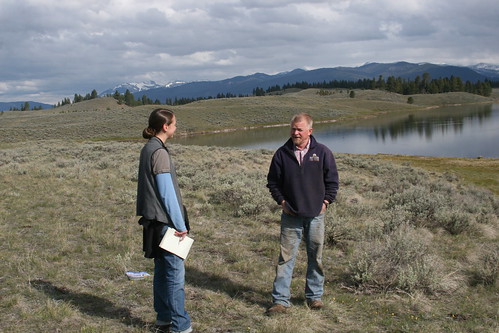
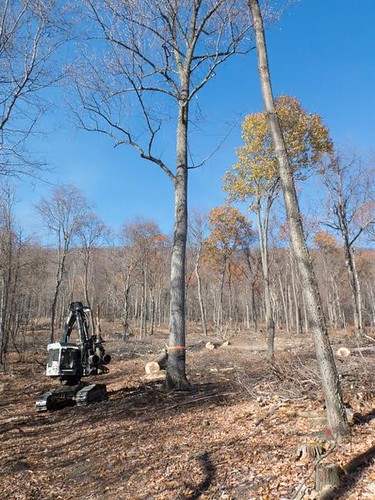
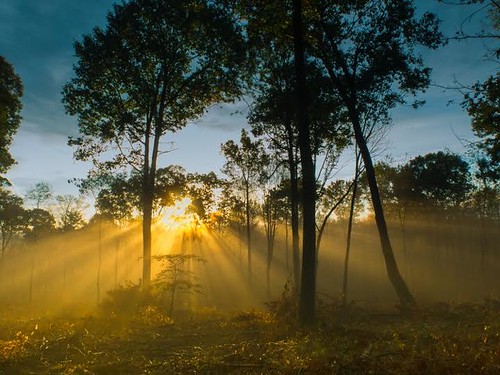
Posted by Michelle Banks, Natural Resources Conservation Service, on October 29, 2015 at 12:49 PM

Jim Stone, Montana Rancher, and Bridget Collins, former Association of Fish and Wildlife Agencies Agriculture Policy Coordinator, discuss conservation programs near Jones Lake on the Rolling Stone Ranch. Photo by Dave Smith.
The following guest blog by Hannah Ryan of Intermountain West Joint Venture and Matt Cimitile of Appalachian Mountain Joint Venture highlights key partnerships that work with farmers and ranchers to conserve habitat for the benefit of birds, other wildlife and people.
The 2014 Farm Bill Field Guide to Fish and Wildlife Conservation is a collaborative effort by conservation partners that provides a new tool for those who work with private landowners and agricultural producers in adopting conservation practices included in the 2014 Farm Bill. It provides biologists, range conservationists, foresters, and others with a road map to help navigate Farm Bill programs and encourages landowners to engage in habitat conservation.
Below, some of the people who tell the story best – private landowners – talk about how 2014 Farm Bill conservation programs and technical support helped them improve working lands and wildlife habitat.
Jim Stone’s ranch in Montana’s Blackfoot Valley is a family-run cow-calf operation. “Our livelihood is in these animals and healthy lands, and it isn’t the most glamorous or easy way to put food on the table. If given the choice, my family and I wouldn’t have it any other way,” said Stone.
According to Stone, “The Farm Bill is a great thing for private lands, and it keeps wildlife and us in business. These programs can be complex and rightly so – conservation and agriculture are not simple. This guide is a translator of sorts to make it easy for anyone to understand. These are the people helping landowners negotiate which program fits our farming or ranching operations as well as the greater landscape we live in.”
“The new 2014 Farm Bill Field Guide to Fish and Wildlife Conservation is a tool for conservationists, particularly those new to Farm Bill programs, to help them choose the best conservation practice for each individual’s farm or ranch,” said Stone.
“These conservationists are often based in USDA’s Natural Resources Conservation Service (NRCS) offices, but spend a good deal of their time with us looking at water, fences and pastures. They need to have a working knowledge of the conservation programs and practices, agricultural systems, landowner needs and eligibility requirements,” said Stone. “Their help with conservation planning and using Farm Bill conservation programs to implement those plans on the farm translates into changes on the landscape that benefit agricultural producers, as well as fish and other wildlife. The employees in these positions work ridge-top to ridge-top and help the community implement conservation on the landscape.”
“On my ranch, we have participated in the Conservation Stewardship Program and the Environmental Quality Incentives Program,” he said. “With these programs, we have put up wildlife-friendly fencing, critter ramps in water tanks, grazing rotation schedules and aspen enhancement projects, just to name a few. The partner biologists are invaluable in matching a ranch or farm’s management with the best programs available. There would be no way we could make use of Farm Bill programs without them.”

The Jackson Family’s land contains young forest habitat created using Farm Bill programs. The photo on the left shows a two-stage shelterwood cut, which leaves the best trees as seed trees and opens the canopy for regeneration. Photo: Mike Jackson
Mike and Laura Jackson own 114 acres of mostly wooded property on the eastern flank of Tussey Mountain in Pennsylvania. “From our deck we view large forests of oaks, hickory, tulip poplar and red maple that run up against the rolling Allegheny Mountains and surround three small mountain fields. Laura’s great-great-great-great grandfather purchased this tract in 1811,” said Mike Jackson.
“We have come to love the tranquility and solitude of the place and have been focusing on being good stewards to the land for wildlife.”
The Jacksons were introduced to NRCS’ Working Lands for Wildlife (WLFW) through local conservation groups. “We went on several field trips and saw firsthand what proper forest management and regeneration looks like when creating young forest habitat through conservation programs – forests that are diminishing in our region and are essential for a variety of wildlife,” said Jackson.
By enrolling in Farm Bill programs through WLFW, the Jacksons have had foresters and biologists from NRCS, Pennsylvania Game Commission, Pheasants Forever, and the Pennsylvania Bureau of Forestry come out to analyze our property. “With their assistance, we were able to treat invasive species that were overwhelming our land and log 27 acres to create young forest habitat for Golden-winged warblers,” said Jackson.
“Without Working Lands for Wildlife and other conservation programs, and the technical assistance to help implement this program, we would not have been able to make these improvements,” said Jackson. “It is ideal for creating high-quality habitat and making a positive impact on the landscape. Since this work was accomplished, we have seen wild turkey inside the logging area, watched Eastern bluebirds nesting in a snag, discovered a new species of wildflower on the property that is great for Monarch butterflies, heard male Cerulean warblers, and have started monitoring for Golden-winged warblers.”
The Jacksons believe managing their property in this way will benefit a whole host of species and the landscape as a whole.

The same area on the Jackson Family land at sunset. Photo: Mike Jackson.
Private lands are essential for providing habitat for nearly two-thirds of all species listed as threatened or endangered under the Endangered Species Act (ESA). Through WLFW, NRCS works with conservation partners and private landowners to restore populations of declining wildlife species, provides regulatory certainty and strengthens rural economies.
The nation’s farmers, ranchers, and forest managers provide not only food and fiber for the world but also provide a variety of environmental benefits, including healthy habitat for wildlife.
Download the 2014 Farm Bill Field Guide to Fish and Wildlife Conservation or request hard copies from the Intermountain West Joint Venture at hannah.ryan@iwjv.org.
Related Posts
Seventy Years Could Not Erase the Memory of a Wildfire Hero
From the #USDA:

Posted by Robert Westover, Office of Communication, U.S. Forest Service, on October 28, 2015 at 4:00 PM

Deidra McGee holds the award she was given by the Triple Nickles Association. Photo credit: US Forest Service
It’s been a busy few months for the Triple Nickles, the U.S. Forest Service’s first African-American smoke jumping crew. On Aug. 6 of this year a member of the crew who was the first recorded death of a hot shot wildland firefighter was posthumously honored at his gravesite that was recently found after a long search.
Seventy years ago, Pfc. Malvin L. Brown of the 555th Parachute Infantry Battalion known as the Triple Nickles, died while serving his country. Because of the racism prevalent in the segregated U.S military of the 1940s, Brown wasn’t given a burial with the honors he had earned.
Brown’s life changed when in 1944, while WWII was raging in Europe, a small cadre of African-American men was training to become the Army’s first Black paratroopers. Within months, their ranks grew to a battalion. A year later they were sent to Oregon to be trained by the Forest Service as smokejumpers and firefighters—and by the Army as bomb diffusers for the Japanese balloon bombs, sent by the thousands across the Pacific to land along North America’s west coast.
Brown died after falling from a tree during a wildfire after parachuting into the hot zone. His heroic death, though, received little attention at the time. However, this summer, Brown finally received the recognition and the media attention he deserved.
Deidra McGee, an employee of the Forest Service, was able to locate family members who still resided in Pennsylvania where Brown had lived and invited them to attend the service.
The family attended the Aug. 6 ceremony and more recently a second ceremony on September 10 also at the Mt. Calvary Cemetery near Baltimore, Md. The second ceremony took place during the Thirty Sixth Annual Triple Nickles Reunion.
The Triple Nickles broke racial barriers and opened the door for African-Americans who have served the U.S. in every war and conflict. McGee has been an advocate for keeping the history of the Triple Nickles alive for more than two decades.
McGee was recently honored at the Triple Nickles Reunion banquet for her 21 years of promoting, advocating and supporting these valiant men by making the nation aware of their role in history. McGee will become a life member of the Association in the near future, and, as the Triple Nickles Members say, she’ll be “Airborne All the Way!”
Related Posts
Collaboration and Innovation are Keys to Organic Success
From the #USDA:
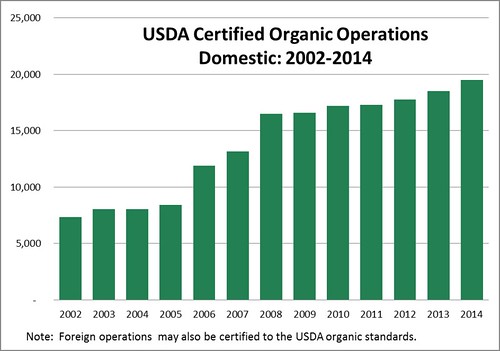
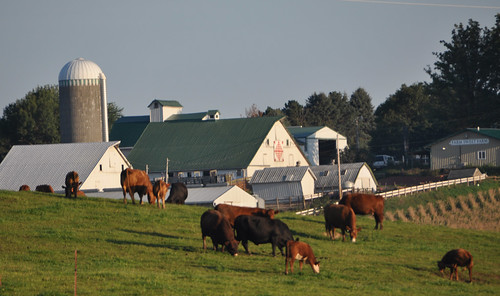
Posted by Anne L. Alonzo, Agricultural Marketing Service Administrator, on October 28, 2015 at 2:30 PM

With 19,474 certified organic operations in the United States and nearly 28,000 certified organic operations from more than 120 countries around the globe, organic agriculture has seen enormous growth and success over the last two years.
For years, the organic industry has experienced enormous growth, defying expectations and creating exciting opportunities for producers and entrepreneurs around the world. 2014 was another record year for the organic community, with 19,474 certified organic operations in the United States and nearly 28,000 certified organic operations from more than 120 countries around the globe.
The retail market for organic products is now valued at more than $39 billion in the U.S. and over $75 billion worldwide. With its rapidly growing market and high consumer interest, USDA is focused on helping this area of agriculture achieve even greater success. In May 2013, Agriculture Secretary Tom Vilsack issued guidance that identified organic priorities for the Department, including training and outreach, growing the organic sector, reducing paperwork, improving research, and gathering data.
USDA’s Organic Working Group, which I have the honor of chairing, has been working across USDA agencies to proactively implement the Secretary’s vision. We’ve made great strides in just the last two years. My agency, the Agricultural Marketing Service, also oversees USDA’s National Organic Program, the bedrock regulatory program responsible for developing and enforcing clear standards and expanding trade opportunities to create new markets for U.S. organic operations.
Below are examples of the USDA’s successes and our commitment to growing organic agriculture:
Organic Research
Over the last two years, USDA invested $81.5 million in research to support organic production, including efforts to develop sustainable nutrient management in organic grain cropping, livestock, and reduced-tillage systems, as well as projects to improve the productivity and success of organic agriculture.
USDA’s National Agricultural Statistics Service released its third Organic Producer Survey, which will help us evaluate and establish organic crop insurance programs, in addition to providing timely and reliable information to the industry.
Streamlining Services
In the last two years, more than 1,100 farms have benefitted from $15 million in assistance through USDA’s Natural Resources Conservation Service (NRCS) Environmental Quality Incentives Program Organic Initiative. NRCS also streamlined their conservation activity plans for producers who are transitioning to organic farming practices.
Simplifying Certification
In the last two years, USDA Rural Development awarded $27 million in grants and loans to support organic producers and handlers.
In 2014, AMS issued over 9,000 reimbursements totaling over $7 million to defray certification costs for organic producers and handlers. Our Sound & Sensible initiative also awarded project contracts to 14 organizations to create tools and resources that help make organic certification more accessible, attainable, and affordable.
Organic Education and Resources
In 2012, AMS sponsored the launch of the Organic Literacy Initiative training and outreach program to help USDA employees better understand and serve organic operators. Over 30,000 USDA staff members have taken the training.
In 2013, the Organic Working Group established an online “one-stop-shop” at www.usda.gov/organic, which features USDA’s full range of services for organic producers.
Serving Organic Markets
USDA continues to expand markets for American organic products abroad, adding to the list of agreements that increase market access for U.S. producers. This Administration has secured trade arrangements with five countries so far: Canada, the European Union, Japan, Korea, and Switzerland.
AMS Market News provided market and pricing information for more than 250 organic products and developed plans to include even more data.
USDA’s Risk Management Agency released several new options to provide effective insurance coverage for organic crops and better risk management tools for organic producers.
That’s quite a list—and there is still more to come! Moving forward, we will continue to develop more comprehensive resources for organic stakeholders and incorporate critical organic research needs across USDA’s programs. Our commitment to organic agriculture has been critical to the sector’s growth, and I look forward to seeing what we can achieve in the coming years.

Over 10,000 farms have benefited from USDA’s streamlined services and our efforts to simplify organic certification.
Related Posts
Bats Worth Billions to Agriculture
From the U.S. Geological Survey (USGS):
Bats Worth Billions to Agriculture — Tiny insect-eating bats, some about the size of an adult thumb, are responsible for saving at least three billion dollars a year in U.S. agriculture a year. How? By eating large amounts on pests that eat or damage our crops. However, bats are among the most overlooked, economically important, non-domesticated animals in North America.
Over the past four years, bat populations are at risk in some areas of the country as a result of white-nose syndrome, a new and devastating fungal disease. Additionally, scientists are also concerned with the potential losses of certain species of migratory bats at wind-energy facilities. Photo credit: Paul Cryan, USGS.
Learn more: http://on.doi.gov/1XoPQFO
#USGS #science #batweek #bats #agriculture
Bats Worth Billions to Agriculture — Tiny insect-eating bats, some about the size of an adult thumb, are responsible for saving at least three billion dollars a year in U.S. agriculture a year. How? By eating large amounts on pests that eat or damage our crops. However, bats are among the most overlooked, economically important, non-domesticated animals in North America.
Over the past four years, bat populations are at risk in some areas of the country as a result of white-nose syndrome, a new and devastating fungal disease. Additionally, scientists are also concerned with the potential losses of certain species of migratory bats at wind-energy facilities. Photo credit: Paul Cryan, USGS.
Learn more: http://on.doi.gov/1XoPQFO
#USGS #science #batweek #bats #agriculture
St. Marks and St. Vincent National Wildlife Refuges
From the U.S. Department of the Interior:
When the sun rises over St. Marks and St. Vincent National Wildlife Refuges in October, it is greeted by autumn wildflowers, migrating butterflies and a great variety of birds. Northern harriers hunt over the refuge marshes, careful to avoid the alligators. It is a beautiful and peaceful place, found on the border of fresh and saltwater marshes in northern #Florida.
Photo by Betsy Kellenberger (www.sharetheexperience.org).
Want to be featured on Interior’s accounts? We’re partnering with CBS This Morning to share amazing sunrise photo from America’s national parks and other public lands. Tag your photos with#SunriseThisMorning for a chance to have one of your photos appear on our feeds!
When the sun rises over St. Marks and St. Vincent National Wildlife Refuges in October, it is greeted by autumn wildflowers, migrating butterflies and a great variety of birds. Northern harriers hunt over the refuge marshes, careful to avoid the alligators. It is a beautiful and peaceful place, found on the border of fresh and saltwater marshes in northern #Florida.
Photo by Betsy Kellenberger (www.sharetheexperience.org).
Want to be featured on Interior’s accounts? We’re partnering with CBS This Morning to share amazing sunrise photo from America’s national parks and other public lands. Tag your photos with#SunriseThisMorning for a chance to have one of your photos appear on our feeds!
Wednesday, October 28, 2015
UPS Deploys 18 New Zero Emission Electric Trucks In Texas
UPS (NYSE:UPS) today announced the deployment of 18 electric, zero emission delivery vehicles to the Houston-Galveston area in Texas. The truck purchases are the result of a partnership with the U.S. Department of Energy (DOE), local governments and non-profits. These vehicles, designed and built specifically by the Workhorse Group for the “stop and go” needs of a UPS delivery truck, will avoid the consumption of an estimated 1.1 million gallons of diesel fuel over 20 years.
UPS Deploys 18 New Zero Emission Electric Trucks In Texas
UPS Deploys 18 New Zero Emission Electric Trucks In Texas
ENISA to invest in emerging smart critical infrastructure security
The European Union Agency for Network and Information Security (ENISA) has revealed that it will be looking to focus its attention on “developing good practices” when it comes to “emerging smart critical infrastructures” in 2016.
In its Work Programme document, the European Union agency said that individuals and organizations will benefit from this investment, as they will have at their disposal comprehensive and detailed security and resilience guidelines.
ENISA to invest in emerging smart critical infrastructure security
Urban Gardens Promote Education, Nutrition and More
From the #USDA:
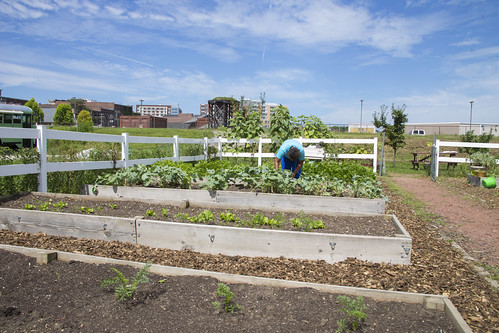
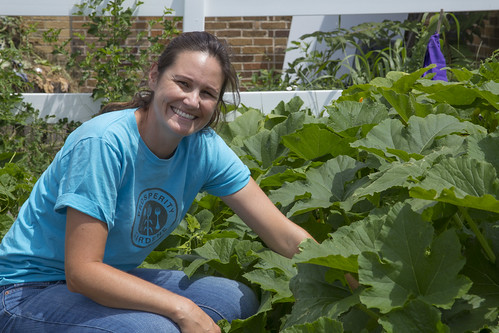
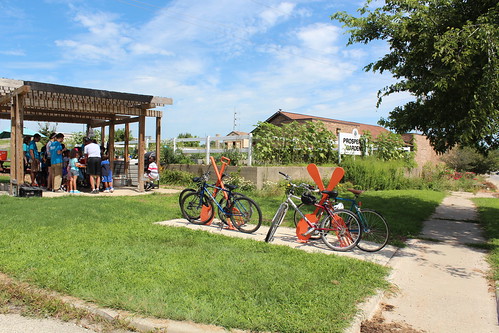
Posted by Jody Christiansen, Natural Resources Conservation Service, Illinois, on October 28, 2015 at 10:30 AM

Students and teachers at Ready School, Prosperity Garden’s staff and volunteers tend the gardens to provide fresh produce to the surrounding community.
On a small parcel of land in the heart of the City of Champaign, Illinois, are two gardens that offer opportunities for neighbors and the community to learn about growing food, eating nutritious food and earning a living. The Prosperity Gardens are educational, bringing at-risk students to work the ground, grow the plants and sell the produce at local farmer’s markets.
USDA’s Natural Resources Conservation Service (NRCS) was able to help support this important endeavor through The People’s Garden, USDA’s collaborative community garden initiative with more than 1,300 local and national organizations all working together to establish community and school gardens across the country.
Nicole Bridges, University of Illinois Extension Service employee and local Garden Programmer, oversees the activities at the Prosperity Gardens and has been instrumental in gaining neighbor and community support. Bridges did a lot of research when she first started with the garden. She attended local meetings to become familiar with the people who live there and listened when they said, “Our youth need jobs.”

Nicole Bridges, garden programmer, sits next to one of the many garden beds.
Working with a friend from the Ready School, a school for at-risk high school students, a plan was created to get students to the garden as a class project and then, “The project just exploded,” said Bridges.
Josephine Tritsch, Instructor and Program Coordinator at Ready School, teaches agricultural classes and is expanding the curriculum to include business classes.
“I am teaching agribusiness this fall, which includes selling vegetables to staff and harvesting for the cafeteria in our nascent Farm2School program,” Tritsch explained.
“Class content includes marketing, grain and vegetable production, national and international ag practices, and so forth, through guided team projects and the use of Google apps.” Next spring, Tritsch plans to teach a horticulture class and will co-teach classes in job skills and nutrition.
The students worked in the garden and sold their produce at markets during the summer and early fall. Tritsch said, “The community seemed to enjoy buying from us at both the downtown Champaign market and through our Mobile Market program.”
The Prosperity Gardens staff is also starting a Community Supported Agriculture (CSA) option to be managed by students. In addition to the garden contributing agricultural education and business aspects year-round, during the summer the garden serves as a job site.
With the help of Master Gardeners and volunteers, the Prosperity Gardens hosted children from the Boys and Girls Club, who call their group the “Garden Club,” for nine weeks in the summer. Each student, ranging from six-to-eight years old, had their own plot about two-foot square. They planted a bean and watched it grow.
“Each student takes ownership of their plot to understand what is happening during the growing season,” said Bridges. “They learn about bugs, both good and bad.” They also learn about different types of soil and other science facts.
The beds were color coordinated and contained “garden maps,” that helped students understand what plants look like from garden to plate. There was a sensory garden full of herbs to stimulate more of their senses and they learned about nutrition.
“We have kid-friendly knives and they learn how to peel carrots and chop celery, peppers and herbs,” said Bridges. “So each week, they learn to pick, wash and prepare their snack, like toasted wheat bagels and they made the veggie cream cheese.” Some children have been coming for three years and now mentor the younger ones.
Bridges’ goal for these neighborhood gardens is to close the gap between the older generation and younger generation. “The garden club does just that – it gets these kids at a young age and reintroduces a traditional way of life.”
The rest of the planting beds, including a lot across the street, are for the students to grow, harvest and sell a wide variety of produce that neighbors could enjoy. “They grew produce that is culturally relevant with the neighborhood taste, such as collards, green beans, okra, jalapeno peppers, and other items that people in the community enjoy,” said Bridges.
The Prosperity Gardens are a non-profit and they have received donations and grants from local businesses, hospitals, a church and the University of Illinois Extension Service.
“With NRCS’ contributions we purchased items we’ve needed for some time,” said Bridges. They were able to purchase produce crates for harvesting, storing and use at the market. “They sanitize well, collapse for storage, and have made us more productive where we meet agriculture food safety requirements to attend the farmers markets,” she adds.
They currently lease the two garden lots from the city. A new grant will help build a wash and pack facility and they are searching for another acre of city land to house that facility and potentially install high tunnels to extend the growing season. Bridge’s goal is to establish the city’s first commercial urban farm.
Currently the gardens are split between education, nutrition, and marketing the produce. Once the farm and facility is built and functioning, the current gardens will be dedicated to education.
The future hope for Prosperity Gardens is to expand the Farm2School Program and include other youth organizations. “The Boys and Girls Club would like to expand their program beyond the six-to-eight-year-olds as well, making it a great place to learn and have fun,” said Bridges.

Garden Club children and volunteers fix lunch under the pergola at one of the Prosperity Gardens.
Related Posts
Subscribe to:
Comments (Atom)



















